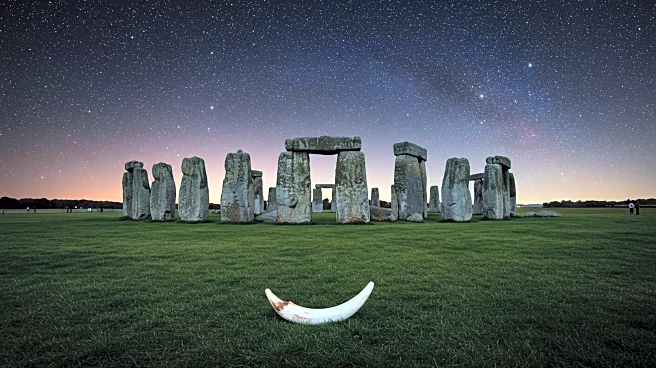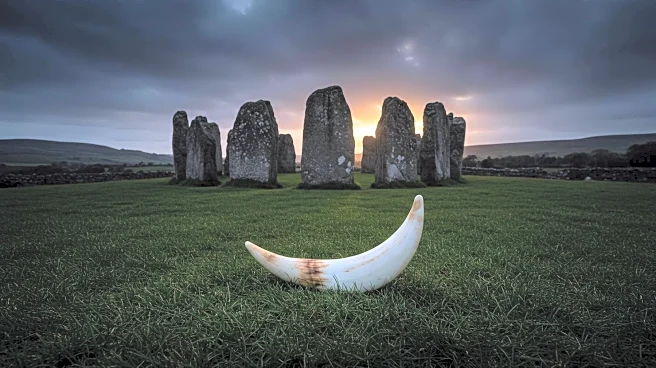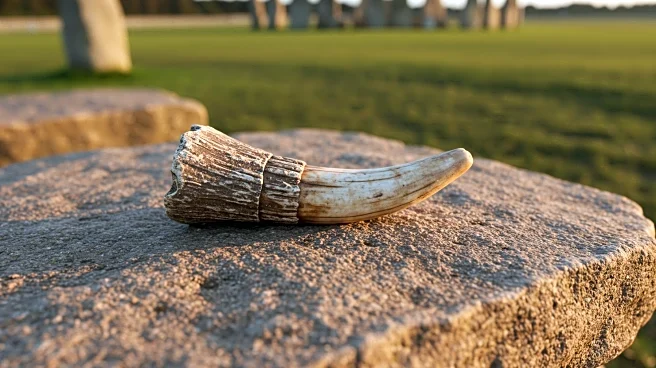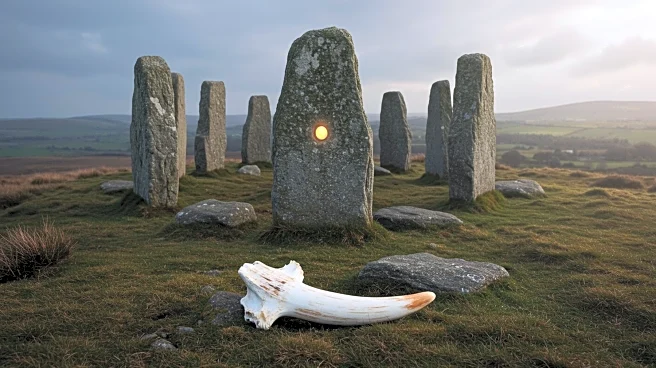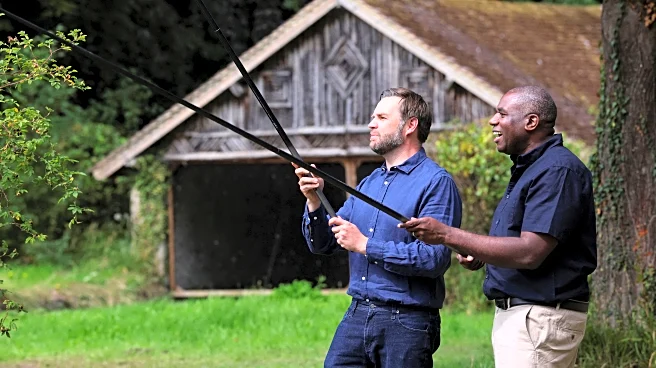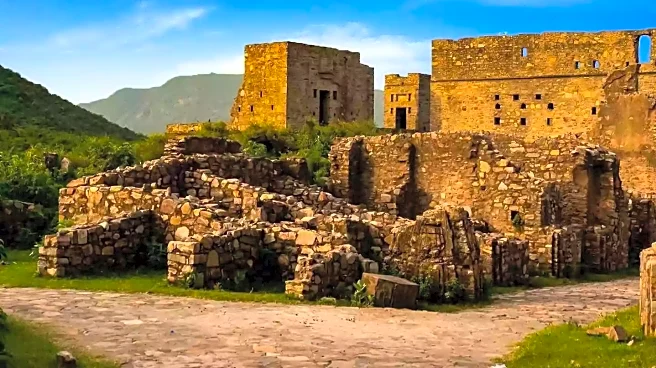What's Happening?
Researchers have uncovered new details about the construction of Stonehenge through the analysis of a cow's tooth found near the site. The tooth, dated to between 2995 and 2900 BC, suggests that the cow originated from Wales, supporting theories that cattle may have been used to transport the massive stones to the site. The study, conducted by scientists from the British Geological Society, Cardiff University, and University College London, used isotope analysis to trace the cow's movements and diet, revealing seasonal changes and geological origins.
Why It's Important?
This discovery provides a new perspective on the logistics and human ingenuity involved in the construction of Stonehenge. It highlights the potential role of animals in ancient engineering feats, offering insights into the socio-economic and cultural practices of the time. The findings contribute to the broader understanding of prehistoric Britain and the connections between different regions during the Neolithic period.
What's Next?
Future research may focus on further isotope analysis of other animal remains found at Stonehenge to corroborate these findings and explore the extent of animal involvement in the site's construction. Archaeologists may also investigate the implications of these findings on the understanding of trade and movement patterns in prehistoric Britain.
Beyond the Headlines
The study opens up discussions on the ethical treatment of animals in historical contexts, as well as the cultural significance of cattle in ancient societies. It also prompts a reevaluation of the narratives surrounding Stonehenge, encouraging a more nuanced understanding of its construction and purpose.
